Sony creates electronics that make people excited, and they’ve been doing this very successfully for over 50 years. You probably have some Sony products around your home. In fact, right now I’m wearing some great headphones made by Sony. (Although they appear to not be “Made in Japan”, but Thailand.)
Even Steve Jobs was a big fan of Sony. He visited their headquarters many times, offering his opinion on their newest products. He was surely inspired by Sony’s ultra-popular Walkman, the first really portable music player, released 20 years before the Apple iPod.
Today Sony is a globally respected brand name, but when the company was founded in 1946, it was just a few engineers trying to design rice cookers and radio parts in an old Tokyo building. In this book summary, you’ll learn not just about Sony’s amazing rise, but also how “Made in Japan” went from being a marker of low quality to a symbol of pride.
Who was Akio Morita?
Akio Morita co-founded Sony with Masaru Ibuka. He became chairman of the board and CEO of the company in 1976. In his free time, he liked tennis, golf and skiing. He died in 1999. (This book is his autobiography, so you’ll be hearing many more details from his life very soon.)
⚡ 1. Spark Passion: Akio’s fascination with electronics begins
About 100 years ago in 1921, Akio Morita was born to a wealthy family living in Nagoya, Japan. For many generations, the family had passed down a successful business making sake, an alcohol popular in Japan. Akio says his childhood was truly privileged, growing up in a large house with maids, butlers and many uncommon luxuries.
His family loved to purchase the latest products from the West, including a Ford Model T car, General Electric refrigerator and a music-playing machine called a Victrola. They were one of the first families in their city to purchase a phonograph, a new kind of higher-quality electric music players. Akio vividly remembers feeling amazed listening to the clear beautiful sound coming from the new machine, compared to the scratchy low quality sound of their old Victrola.
Experiences like that sparked Akio’s lifetime passion for technology. As a teenager, he read many books and magazines about building electronics. He succeeded in making a crude audio recorder based on their directions. Electronics became an obsession, taking up a lot of the time he should have been studying for school.
In school, he always did well in math and science, so he went to Osaka University to study physics. Actually, his parents would have preferred that he study economics, and they had always assumed that as the eldest son, Akio would eventually take over the family business. From an early age, Akio sat in many business meetings to begin learning how his father managed everything. That’s a lot of pressure for a teenager! My parents had a small restaurant when I was growing up, but I probably would have felt trapped if they expected me to carry on the family business.
Akio Morita was born into a wealthy family. They always had the latest imported luxuries, including an early electric music player called a phonograph. These gadgets sparked Akio’s lifelong fascination with technology and he eventually went to study physics at Osaka University.
🌅 2. Begin Anew: End of a war and birth of a company
It was the 1940’s and Japan was at war with America. Akio Morita didn’t want to be drafted into the army, so he signed up to the Japanese Navy instead. This would also allow him avoid being set overseas and even to continue his studies in physics. After graduating university, he was sent by the navy to a large house in the countryside, where he helped research heat-seeking weapons.
In that house, Akio met his future business partner Masaru Ibuka, whom he described as “a brilliant electronics engineer.” Ibuka was in his 30s, running an electronics parts factory that employed 1,500 people. In the midst of the war, Akio and Ibuka often talked about starting a technology company together. After the two atomic bombs were dropped in 1945, the Japanese military surrendered. Almost 3 million Japanese people had died in the war, but the Morita family was grateful their 3 sons were unharmed. Akio recalls people feeling relieved the war was finally over, but also apprehensive about the future.
During the war, America had heavily bombed many of the major Japanese cities. It was in one Tokyo neighbourhood full of bombed ruins that Masaru Ibuka started a small new company. At first they tried making a new type of rice cooker. but it failed. Then they made adapters for radios that would allow people to listen to shortwave frequencies, frequencies which had been banned during wartime. It turns out there was great demand for these adapters and they sold quite a few.
Meanwhile, Akio was asked to help teach physics at a Tokyo University. He went to visit Ibuka, whom he’d kept in touch with. (Which took a lot more effort before the days of the internet!) They decided to go into business together, forming a new company named Tokyo Tsushin Togyo, which means Tokyo Telecommunications Engineering company. But first had to get permission from Akio’s father, who graciously released his first-born son from the obligation of leading the family business—quite a cultural difference from the West!
Speaking of doing business in Japan… In the 1960’s there was a young American kid named Phil Knight. He loved running and he wanted to start a shoe company. Phil had seen Japanese cars become popular in America, and he had a crazy idea that Japanese shoes could also succeed. He didn’t really know what he was doing, but he flew to Japan and convinced a shoe manufacturer to sign a deal with him, which launched his business that is now known as… Nike.
In his own book, Phil’s offers this guidance for young ambitious people: “I’d tell men and women in their mid-twenties not to settle for a job or a profession or even a career. Seek a calling. Even if you don’t know what that means, seek it. If you’re following your calling, the fatigue will be easier to bear, the disappointments will be fuel, the highs will be like nothing you’ve ever felt.”
Akio joined the Japanese Navy, mostly to avoid being sent overseas during World War 2. He was helping to research heat-seeking weapons when he met Masaru Ibuka, a great electronics engineer. After the war, the two cofounded Tokyo Telecommunications Engineering Company (later rebranded Sony).
💡 3. Notice Ideas: Sony’s first major product is born accidentally
After the surrender, Japan was occupied by American forces (Wikipedia) that changed Japan’s constitution, economy, laws and political system. Their aim was to make it impossible for Japan’s military to gain control of the country and go to war again.
Akio and Ibuka’s new company landed a contract from the Americans to install new equipment in a radio station. There Ibuka saw an American officer carrying a machine that recorded audio on plastic tape cassettes. This was new technology and not yet available in Japan. Ibuka believed their company could be very successful making these machines. He convinced the officer to come to their company and show the tape recorder to their engineers.
Afterwards, the engineers quickly made their own working recording machine, but they couldn’t make the tape. In post-war Japan, they simply didn’t have access to the right materials—like plastic! They experimented with many other materials for a long time, but couldn’t make them work. They even made recording tape out of paper, but the audio quality was very poor. Eventually they found the right materials and their machine was ready for sale.
Can you imagine that? Ibuka basically stumbled across their Sony’s first major product idea. I guess this story demonstrates that great founders always have their eyes open for new ideas, everywhere they go. Personally as an online business owner, whenever I’m browsing the internet, part of my mind is always looking for ideas that I can borrow to improve my own websites.
The founder of Walmart was Sam Walton. He started with one small store in one small town, and grew his business into the largest retail company in the world. Sam was always looking for new ideas too. From the early days, he would visit his competitor’s stores all the time and analyze what they were doing. He told Walmart managers to always be visiting the competition and looking for at least one good idea to try in their own stores. This type of learning is perhaps even more important than reading books!
Ibuka randomly saw an American officer using an audio tape recording machine. He believed they could be the first Japanese company to make a similar machine. After a lot of experiments, their engineers were able to make their own working audio recorder and plastic tape cassettes.
🛒 4. Sell Quickly: If you build it, they won’t come
The company began making the tape recorders, but then they ran into a big new problem—Nobody wanted to buy them! When they showed the machine to people, most said it was a cool toy, but way too expensive and heavy. (In fact, it weighed over 70 pounds!) This was a huge wake-up call for Akio and Ibuka. They had both believed that if you build a quality product then people would buy it. But now Akio was learning that you must also communicate the value of your product to the people who will benefit from it.
I am sure that many of us can related to this struggle, whether we had a business that never made sales, or an online blog, video channel or social media page that never attracted much attention.
So Akio tried a different approach: he searched for target customer groups who needed the machines most. At the time, there was a national shortage of stenographers, people who write down everything said in a courtroom. So he presented the audio recorders to the Japanese Supreme Court, who immediately bought 20 of them. Then he sold many more tape recorders to school systems, who needed to play translations of the new American curriculum. By 1952, Akio’s company was selling a lot of tape recorders because the public slowly became aware of the machines and educated of their benefits.
Over the years, Akio learned more important tips related to sales, branding and marketing:
- Always build your own brand, not others. In 1948, the solid state transistor was invented by Bell Labs. Recognizing the potential of the discovery, Sony quickly got a license to use transistors in their products. By 1955, Sony had built a transistor radio. Akio traveled to America looking for large buyers, but he couldn’t find any. A well-known company named Bulova offered to place a large order, but only if their own brand name was on the radios. Although he needed the sales, Akio refused because he believed Sony should always build their own brand, rather than being an invisible manufacturer. In Made in Japan, he writes that was “the best decision I ever made.”
- Design a great sales impression. In 1957, they made a smaller transistor radio marketed as being “pocketable.” Actually, it was a little too big to fit inside a regular shirt pocket. So the company sewed bigger pockets onto all their salespeople’s shirts. They really wanted customers to see the radio being pulled out of a pocket, to highlight how small it was. (I am reminded of Steve Jobs pulling the MacBook Air out of a paper envelope (Youtube.com), which caused some people in the audience to gasp at how thin it was.)
- Choose a memorable brand name – In 1958, their company name changed from “Tokyo Telecommunications Engineering Company” to Sony. They saw the old name was too difficult to remember, especially for international consumers. And they didn’t make a separate graphic logo because they wanted the name “Sony” to be visible on all their products.
I have always believed that a trademark is the life of an enterprise and that it must be protected boldly. A trademark and a company name are not just clever gimmicks—they carry responsibility and guarantee the quality of the product.
Nobody bought their tape recorder, so Akio learned businesses must communicate the value of their product to the right target customers. In 1957, their small “pocketable” radio wouldn’t fit in their salespeople’s shirt pockets, so they sewed larger pockets on. In 1958, they rebranded as “Sony” to make their name short and memorable.
📈 5. Manage Growth: Cultural differences between Japan and America
It wasn’t long before over 50% of Sony’s products were being sold abroad, especially to America. Because of this, Akio Morita believed he should better understand foreign countries and in his words, “become a citizen of the world.” So he moved to New York with his family to establish Sony America. And in 1960, months of hard work paid off when Sony became the first Japanese company ever to be listed on a US stock exchange.
Along the way, Akio learned there were many deep cultural differences between Japan and the West:
- Lifetime Employment vs Career Mobility. In Japan, someone who graduates university and is newly hired at a company generally expects to stay there for their whole career of 20-30 years. There is a lot of social pressure for employees not to quit, and also for management not to fire or layoff people. But in America, it is normal for people to change jobs every few years or get fired. In Akio’s opinion, the Japanese approach is better for achieving management’s most important goal: creating a feeling that everyone in the company is like a family and they share the same fate.
- Long-Term Thinking vs Short-Term Thinking. Akio says Japanese companies are more likely to see the value in long-term investments, and their system has fewer short-term incentives. He was visiting an American television factory and recommended the manager buy some new machines to increase productivity. The manager surprised Akio, replying that he wouldn’t invest in new machines because that would decrease quarterly profits, which his personal compensation is based on.
- Non-Confrontational vs Direct Language. The Japanese language is structured in a way that forces people to be polite and indirect, according to Akio. But Americans often strongly argue and disagree with each other, even while remaining friends. His Japanese associates are sometimes shocked witnessing a Western-style discussion, but Akio assures them it is just regular conversation.
- Conservation vs Wastefulness. In Japanese culture there is an important idea called “mottonai,” which means everything is a gift from the Creator, so wasting anything is almost a sin. As a result, Japanese people value compact, energy-efficient products and have a high rate of recycling. But in America, Akio was often shocked to see wastefulness, like people throwing out a newspaper after skimming it one time.
In 1960, Akio temporarily moved to New York with his family, where he helped Sony become the first Japanese company on the US stock markets. Along the way, he learned how Japanese culture differs from the West, with their lifetime employment, longer-term bias, indirect language and non-wastefulness.
🌟 6. Inspire Creativity: Lead with a well-defined vision
Sony has always tried to be a pioneer and create new types of products, rather than staying in conventional industries. Akio says they invest 6-10% of their sales into new research and development, but spending alone isn’t enough to create innovation, you must also inspire your people with an ambitious concrete aim.
In the 1960’s, Sony was selling many color televisions. They believed a home video recorder would be popular, but the technology to achieve it did not yet exist. In 1969, they invented U-Matic video cassettes (Wikipedia). These were far smaller than old video reels and they became popular for business use, but they were still too big for home consumers. Then one day, Masaru Ibuka was in a meeting with Sony engineers and he put a paperback book on the table, telling everyone that Sony’s top goal was to make a videocassette of this size. This clear vision led to the Betamax cassette, which became very popular.
Sony’s most famous product, the Walkman, was born in a similar way. One day Ibuka walked into Akio’s office and he explained that he was using one of their big tape recorders to listen to music, but it was too heavy and inconvenient. Akio was inspired to make a very portable tape player with lightweight headphones. He told Sony engineers to take their smallest tape recorder and remove the recording parts. The Walkman was introduced in 1979 and went on to be a huge success, selling over 200 million units.
Akio relied on his intuition, not market research. In fact, many Sony employees told him the machine wouldn’t sell because it couldn’t record audio. But he has always believed you can make innovative products, then educate the public about them. He wrote, “The public does not know what is possible, but we do.”
Sony invests 6-10% of sales into new research and development, but it is also crucial to have a well-defined vision. Betamax was invented after Ibuka challenged engineers to make a video cassette the size of a paperback book. The ultra-popular Sony Walkman was made based on Akio’s intuition of what people wanted, not market research.
🏆 7. Compete Well: Thriving amidst constant change
When Akio founded Tokyo Telecommunications Engineering Company in that small Tokyo store, electronics still used glass vacuum tubes, which often burnt out and had to be replaced. Yet over the last 70 years, we have come to expect products to constantly become more reliable and useful. So a high-tech company must always be introducing something new, not relying on past success. As this book was published, the CD was replacing older audio formats like cassette tapes and vinyl records. Some American companies were very reluctant to adapt to this change, and Akio warned they would have a hard time surviving.
It is ironic that 15 years after the book was published, Apple introduced the iPod and iTunes, adapting to the trend of digital music before Sony. Even more recently, companies like Spotify adapted to the trend of streaming music subscriptions before Apple. Technology is constantly pushing forwards.
Jeff Bezos says it is important to put yourself out of business before your competitors do. He learned this lesson the hard way when Amazon’s CD sales were destroyed by Apple’s iTunes. A few years later, Bezos made sure Amazon released the best ebook reader first, even though ebooks could have destroyed their core business of selling paper books. They took the risk, released the Kindle, and now have a virtual monopoly on the ebook market.
Learn more in our summary of The Everything Store by Brad Stone
In the 1980’s, many Americans were concerned the American manufacturing industry was being “hollowed out” by so many imported products from Japan. Some politicians were calling for more trade protectionism, which is an easy solution to sell voters who are worried about their jobs. However, Akio believes protectionism only hurts consumers because companies would no longer need to compete to offer the best products, quality or service. Rather then protecting low-level work which will be done by robots eventually, employees should be retrained.
Japanese companies compete with each other ruthlessly, which makes them so competitive abroad. Ironically, their approach of constant improvement of quality came from American thinkers like W. Edwards Deming. And over 50 years, they were able to compete until “Made in Japan” went from being a marker of low quality, to a symbol of pride. On the other hand, when Akio was invited to the Soviet Union in 1975 and given tours around their television factories, he was not impressed, saying their poor quality products were a result of “the indifferent, plodding attitude of the workers” as a result of not needing to compete.
Businesses should always be moving forwards and embracing new technologies, even if they threaten the existing business. Like how Sony began making CD players even though it would cut into their cassette player sales. Competition leads to constant improvement and better quality products for consumers.
- If you have a business or product idea, identify a specific group of target buyers who have a matching need, then contact 10 of them. (Just like Akio couldn’t sell his first tape recorders, until he identified courts and school systems as ideal target prospects.)
- What one thing could you do this month to build more of a family-like feeling with your coworkers or employees? (To get you started, here is a list of 35 decent team building activities (Workamajig.com).)
- In your industry, list 3 areas trends are growing and 3 that are declining. How can you invest more time and effort into the growing trends? (Websites like Statista.com may be useful for researching trends.)

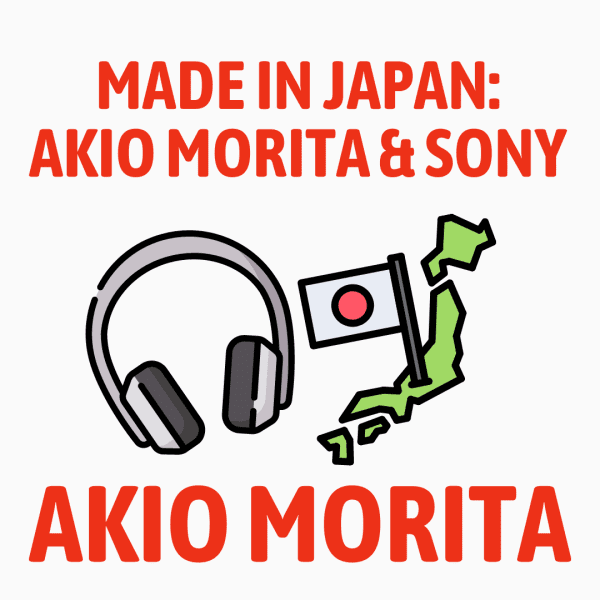










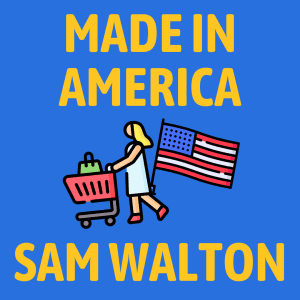


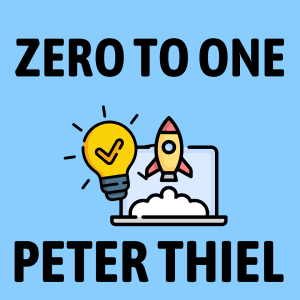
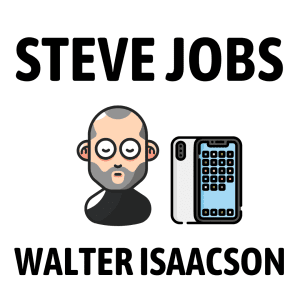
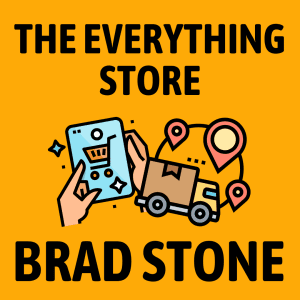
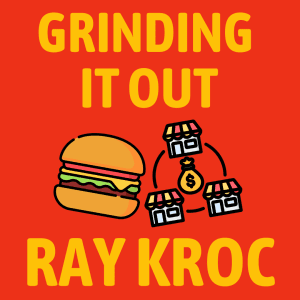

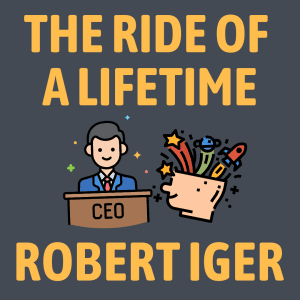
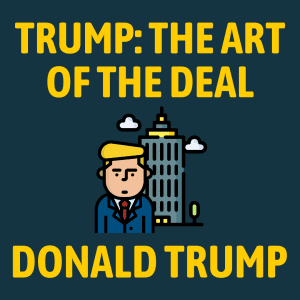





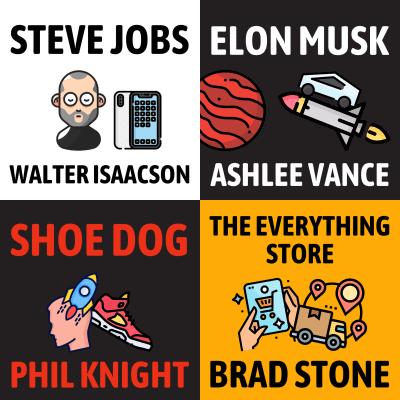
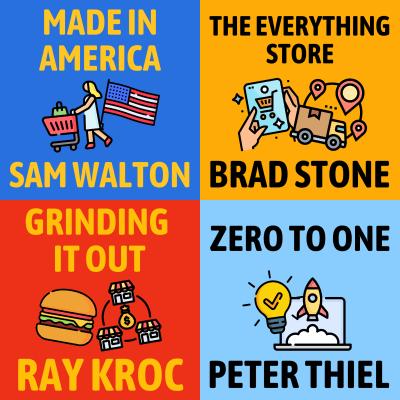


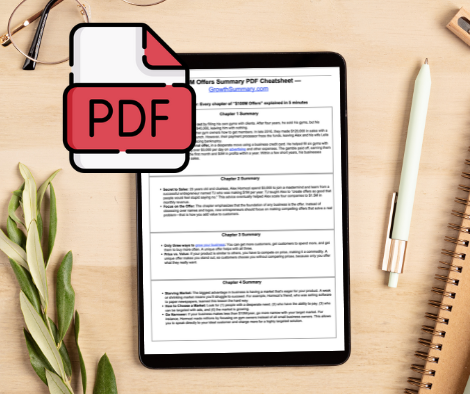
Community Notes